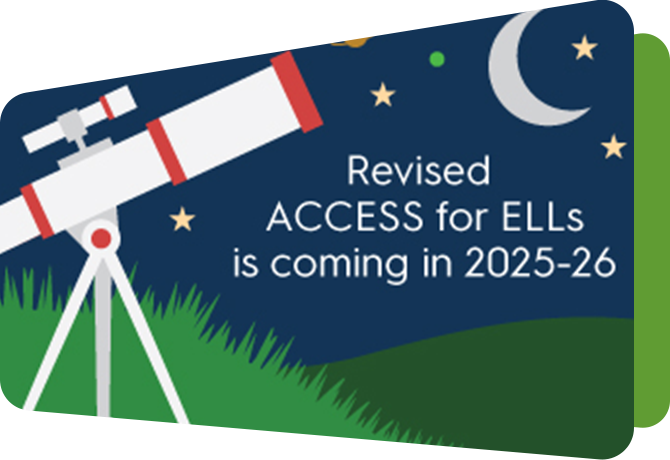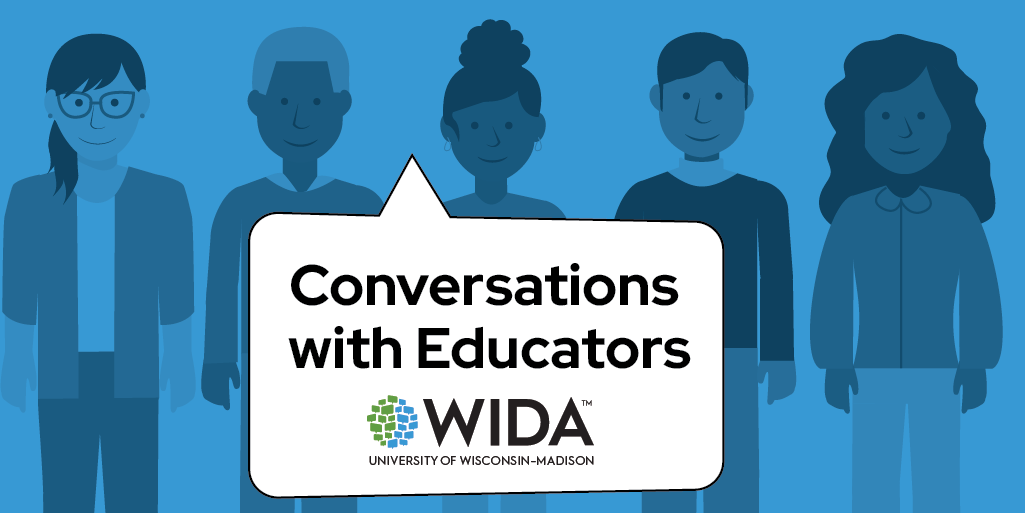Experts answer WIDA Language Charts questions

We released the WIDA Language Charts (in two modes – Expressive and Interpretive) in May 2025. Since then, we have been collecting educator questions about the relationship among the Language Charts, WIDA ACCESS and end of unit classroom assessment.
The following list represents the most frequently asked questions about the Language Charts. Answers to the questions come from Lynn Shafer Willner and Margo Gottlieb, creators of the charts.
Before we get started, here are some key resources that feature the Language Charts:
- Read the How to use our new language charts right now news article to get familiar with the charts.
- Learn about the changes coming to WIDA ACCESS and WIDA ACCESS for Kindergarten this school year on the WIDA ACCESS in 2025-26 page.
- Find out how the Language Charts can support collaboration and improve teaching and learning for multilingual learners in the latest WIDA Snapshot: Plan Curriculum, Instruction and Classroom Assessment With the WIDA Language Charts.
What is the relationship between the Language Charts and the WIDA Speaking and Writing Rubrics?
The Language Charts are updated versions of the WIDA Speaking Rubric Grades 1-12 and WIDA Writing Rubric Grades 1-12. While the Language Charts reflect six grade-level clusters — K, 1, 2-3, 4-5, 6-8, 9-12 — the rubrics cover a single span, grades 1-12. The Language Charts are designed to help educators connect WIDA ACCESS scores with end-of-unit assessment of students’ Expressive (speaking, writing and representing) and Interpretive (listening, reading and viewing) language according to the WIDA English Language Development (ELD) Standards Framework, 2020 Edition.
What are the current suggested uses of the Language Charts?
The Language Charts are aligned to the Proficiency Level Descriptors in the WIDA ELD Standards Framework, 2020 Edition. Their user-friendly descriptors can be used in the following ways:
- As an end-of-unit assessment to evaluate student language use and performance in relation to unit goals
- For communication with educators and administrators about student progress and instructional planning
What proficiency level is targeted in the Language Chart descriptors?
The Language Charts describe student performance at the end of a proficiency level, similar to the Proficiency Level Descriptors in the 2020 Edition. These descriptors help educators understand where a student is headed on the language development continuum.
How might we describe growth in the students’ language proficiency over time?
You may use the Language Charts to analyze and report student work over time — such as e-portfolios, end-of-unit projects or quarterly samples. To assign an overall English language proficiency level for Interpretive or Expressive Language,
- Review student performance across the three dimensions of language: Discourse, Sentence and Word/Phrase as indicated in the Language Charts.
- Identify the End of Level for each student sample in at least two of the three dimensions.
- Across a school year, use multiple student samples of evidence to confirm a student’s language proficiency level.
How might we use the Language Charts to evaluate students’ work samples at the end of units?
You might mark the student’s consistency of language use
- By Language Dimension:
- Discourse Dimension = End of Level ____
- Sentence Dimension = End of Level ____
- Word/Phrase Dimension = End of Level ____
- Across Language Dimensions:
- Holistic Rating (based on at least two of the three language dimensions) = End of Level ____
Find a definition of “consistency” in the Definitions and Examples section of the Language Charts.
WIDA ACCESS assesses individual language domains, yet the Language Charts provide information using interpretive and expressive modes. How do we use modes to gauge language domains?
Each communication mode consists of two language domains. The Interpretive mode includes Reading and Listening, while the Expressive mode includes Speaking and Writing. You may use individual student samples along with the Language Charts to examine each of the four language domains independently.
Is there a breakdown within End of Levels 2 through 6, like the breakdown of descriptors leading up to End of Level 1?
No. The Language Chart descriptors for Levels 2 through 6 are presented along a continuum of language development; they are not broken down further. Refer to the Full Continua tabs (Tabs 17-20) in the Language Charts spreadsheet, which show the student language development progression across six grade-level clusters (K, 1, 2-3, 4-5, 6-8, 9-12).
The continuum for End of Level 1 is a unique case. It was developed by referencing earlier grade-level clusters to illustrate how students begin building their language toward the end of Level 1.
Can we use the Language Charts as a tool to formulate students’ annual goals? Do they also apply to newcomers?
Yes. The Language Charts are appropriate for setting annual goals with multilingual learners. While grade-level cluster Language Charts are useful for most students, the End of Level 1 descriptors are especially useful when setting goals with newcomer students.
Can we create name charts for the Language Charts?
Yes. You can use the Excel version of the WIDA Language Charts to easily copy and paste grade-level cluster charts into another document or spreadsheet. Then add rows for the student names and customize the charts for individuals or small groups.
How might we include Language Chart Descriptors in instructional units?
As part of a backward design approach, you may use Language Chart descriptors as you formulate end-of-unit language learning targets. These descriptors provide clear expectations for how multilingual learners can use language to engage with academic content.
To support students in reaching these targets, formative assessment practices should be used throughout instruction. These practices include the following:
- Observing and annotating student language use during instructional activities.
- Documenting the level of scaffolding students need to use specific Language Features independently (i.e., without support).
- Monitoring how students use Language Features — such as vocabulary, sentence types, organizational patterns and cohesive devices — to carry out a designated Language Function within a Language Expectation.
This ongoing assessment helps educators adjust instruction, provide targeted feedback and ensure that students are progressing toward independent and meaningful use of academic language.
Learn more in the WIDA Snapshot referenced at the beginning of this news article.
Can you tell us more about the Definitions and Examples section of the Language Charts?
The Definitions and Examples section of the Language Charts is aligned to definitions in the Glossary of the WIDA ELD Standards Framework, 2020 Edition, and the examples found in the 2020 Proficiency Level Descriptors. The Definitions and Examples in this section of the document are organized by Language Dimension.




